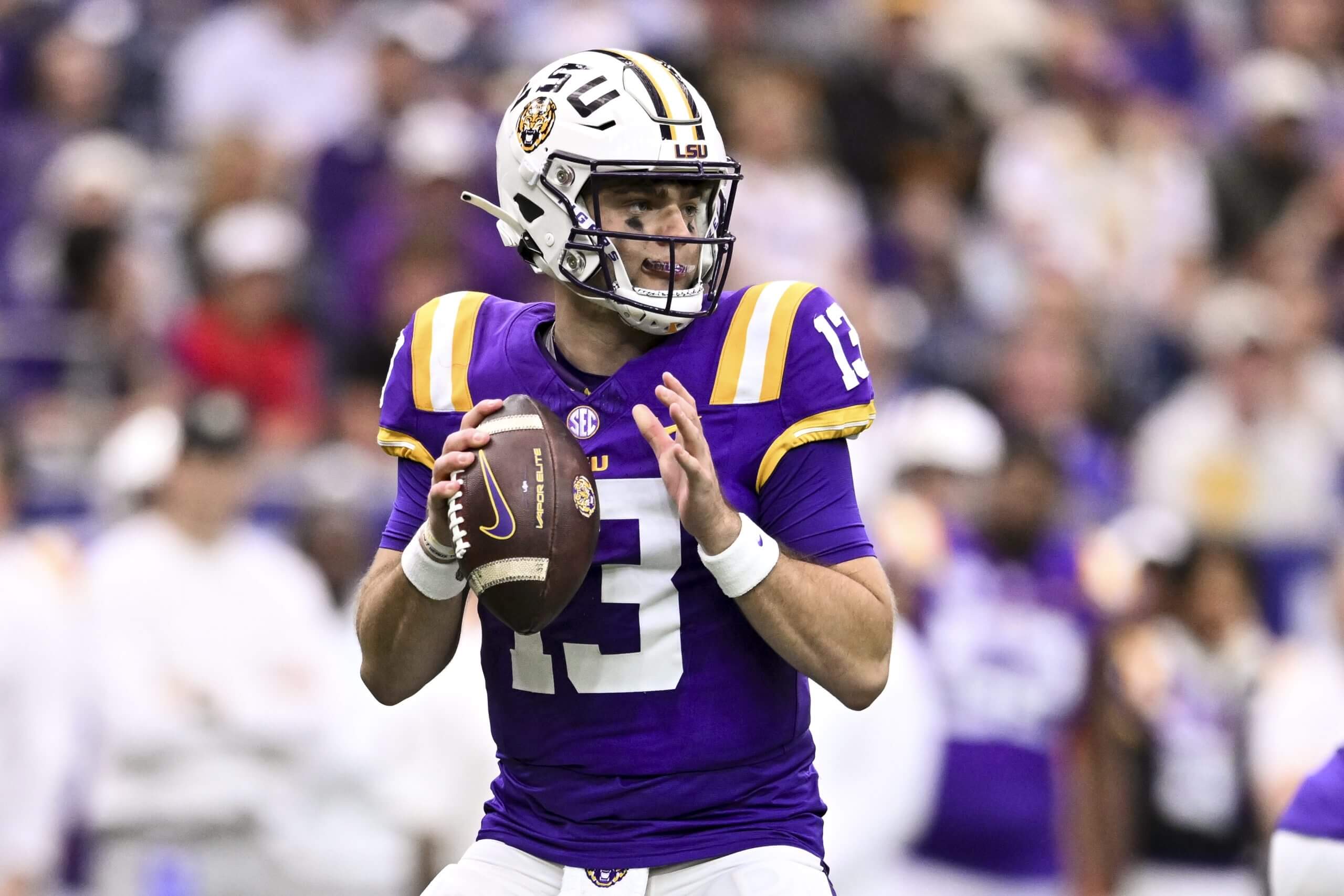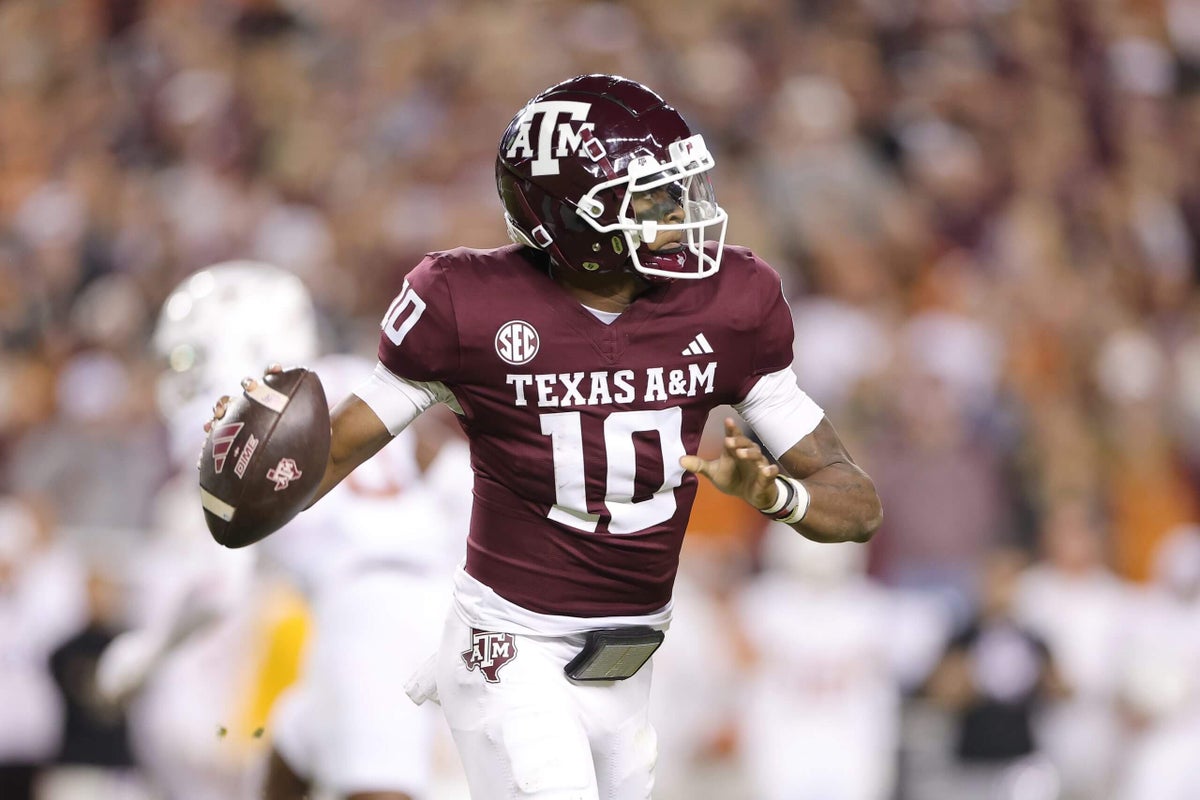We’re exactly a month away from Kansas State and Iowa State kicking off the 2025 college football season in Ireland. Before we get there, we’ll have to spend the next several weeks in training camp mode.
Jobs will be won. Surprises will emerge. Injuries will occur. And since everyone is still undefeated, hope will be sold.
A few weeks ago, “The Athletic Football Show” took a look at the stories teams are telling themselves as a new NFL season approaches.
We liked the concept so much that we’re trying out a variation of it here on the college football side of things. Today, we’re highlighting the narratives that College Football Playoff hopefuls are selling this preseason. Some of these are worth buying into. Some are not.
Note: This list is looking at programs that did not reach the 12-team CFP last season.
The Crimson Tide scored 17 points or fewer in losses to Tennessee, Oklahoma and Michigan last season as they finished 9-4 and failed to reach the Playoff in coach Kalen DeBoer’s first season.
But the offense is going to take a considerable step forward this season with the arrival of coordinator Ryan Grubb, who has coached with DeBoer at Sioux Falls, Eastern Michigan, Fresno State and Washington, where they reached the CFP championship game in 2023. Grubb was the Seattle Seahawks offensive coordinator in 2024 — after he spent a month at Alabama following DeBoer’s hire — but was fired after just one season.
The 2024 season demonstrated that DeBoer and Grubb are better together than they are apart, and that familiarity will boost the Crimson Tide’s offense this fall. And while Jalen Milroe is a unique talent at quarterback, he wasn’t an ideal fit for DeBoer’s offense.
Now Alabama is likely to have a steadier passer in place (presumably Ty Simpson), which will unlock the passing attack and allow the offense to take advantage of a talented group of receivers, led by star sophomore Ryan Williams.
The Grubb hire and better fit at quarterback will provide the offensive consistency that was missing in 2024 and will help Alabama, which brings back a strong core from a top-10 scoring defense, return to the Playoff and compete for the national championship again.
It’s Year 2 for DJ Lagway, and he and the program are ready to take a major leap. Look at how the Gators finished last season, winning their last four games, which included victories over good LSU and Ole Miss squads. Lagway sat out the spring because of shoulder soreness but said last week at SEC media day that he’s fully recovered.
Florida coach Billy Napier preached a slow build when he took the job more than three years ago, and this is when the program will start to see the fruits of the labor. Florida will be strong in the trenches, particularly along the defensive line with Tyreak Sapp. And the Gators have added two talented receivers in true freshman Dallas Wilson and UCLA transfer J. Michael Sturdivant.
Lagway possesses the ability to elevate those around him, so expect Florida to become a real threat now that the former five-star recruit is surrounded with strong talent across the roster.
And, no, don’t look at Florida’s schedule.
The Fighting Illini return 16 starters from the program’s first 10-win team since 2001. Illinois’ optimism for 2025 is less about selling the dream and is rooted more in reality.
Coach Bret Bielema knows what it takes to be successful in the Big Ten and enters Year 5 with the Illini and Year 3 with Luke Altmyer, who is one of the best quarterbacks in the league, under center. That sort of continuity is difficult to find in college football these days.
And while the schedule isn’t easy — there are road games at Duke, Indiana and Washington and a home game against Ohio State — it’s definitely manageable for a team with CFP aspirations.
The Illini check a lot of boxes. Good head coach. Solid quarterback. An experienced, veteran team. A schedule that doesn’t feature too many heavyweights. And there’s the built-in confidence from last year to set the table for a potential breakthrough season.
Quarterback Avery Johnson went through the natural growing pains you would expect from a first-year starter, but those are behind him now, and his development and consistency will help the Wildcats contend in the Big 12 after going 5-4 in league play in 2024.
Kansas State returns dynamic receiver Jayce Brown, who will be Johnson’s top target. And Matt Wells’ ascension to offensive coordinator and play caller will also help Johnson’s development. With Johnson, Brown and running back Dylan Edwards, Wells will have explosive players at his disposal.
The line will be the strength of the Kansas State defense and should help take some pressure off a new-look secondary.
In a wide-open Big 12, the ingredients are there for a conference title run.
LSU (9-4)
The Tigers recognize that they have one of the best quarterbacks in the country in Garrett Nussmeier, so they went all-in this offseason — landing the best transfer portal class in the country — which will put them in contention for their first CFP trip since winning the 2019 national championship.
LSU will be better at the skill spots, led by transfer receivers Nic Anderson (Oklahoma) and Barion Brown (LSU). The Tigers also addressed their most pressing need — the defensive line — with the additions of Florida State’s Patrick Payton, Florida’s Jack Pyburn and USF’s Bernard Gooden. They should help a defense that gave up 5.9 yards per play last season (89th nationally).
There are also some high-impact freshmen at positions of need in corner DJ Pickett and running back Harlem Berry.
This is the most talented roster Brian Kelly has had at LSU, and he’s finally got the Tigers to the point where they can compete for a national championship.

Garrett Nussmeier is the only returning quarterback who threw for 4,000 yards in 2024. (Maria Lysaker / Imagn Images)
The Hurricanes placed a major emphasis on fixing the defensive issues that sabotaged their 2024 season, and now they have what it takes to finally reach the Playoff with coach Mario Cristobal.
Miami hired Corey Hetherman as defensive coordinator after he led Minnesota to a top-15 finish in scoring defense and yards per play allowed. The Canes also brought in six transfers in the secondary to fix a unit that was a weakness last year.
The offense lost a lot of production, too, but brought in some experienced talent, headlined by Carson Beck, one of the top transfer quarterbacks available in the offseason.
Cristobal has recruited well during his tenure. So the talent is there, especially compared to ACC foes. The schedule — at SMU on Nov. 1 is the toughest road game — sets up well, too. With that combination, Miami should be in the Playoff this fall — if it can avoid the typical pitfalls that have plagued Cristobal’s teams over the years.
The Gamecocks lost some really important pieces on both sides of the ball, but quarterback LaNorris Sellers and edge rusher Dylan Stewart are foundational building blocks and two of the best players in the SEC. So there’s top-end talent and a solid transfer class that helped address some needs in key spots.
It took a while for South Carolina to find its footing last season. The Gamecocks started 3-3 before winning six consecutive games to end the regular season as one of the hottest teams in the country. Sellers’ ankle injury contributed to that slow start, and we saw what he’s truly capable of later in the season.
In theory, South Carolina wasn’t far off from a Playoff appearance last year — probably one win away. If the Gamecocks can avoid a similar slow start this season, they should be in contention for a CFP bid late in the year.
Texas A&M (8-5)
Despite major defensive issues and deficiencies at receiver, Texas A&M was still in the mix for the SEC Championship Game late in the season.
Quarterback Marcel Reed displayed some promising flashes, and the Aggies upgraded his receiving options through the portal with Kevin Concepcion (NC State) and Mario Craver (Mississippi State).
Cornerback transfers Julian Humphrey (Georgia) and Jordan Shaw (Washington) have solid experience and could help a pass defense that struggled last season. Tyler Onyedim (Iowa State), Dayon Hayes (Colorado) and T.J. Searcy (Florida) were brought in to boost a defensive front that needs to be better against the run and rushing the passer.
Head coach Mike Elko accomplished some good things in his first season, and the Aggies could be a CFP darkhorse candidate after addressing some of their issues in the offseason.
The Big 12 is wide open and there for the taking, which is why the Red Raiders spent so much money to upgrade their roster this offseason.
Will other programs be jealous of that spending? Sure. Does it raise expectations in a manner Texas Tech has never really faced before? Absolutely.
But any program would love to have transfer additions such as edge rusher David Bailey (Stanford), offensive tackle Howard Sampson (North Carolina) and running back Quinten Joyner (USC) — especially in a league that isn’t loaded with future NFL talent like the SEC or Big Ten.
The Red Raiders were close to conference title contention last season, one win away from being involved in a convoluted multi-team tie for first place. So they weren’t that far off.
Now with full buy-in from the donors, the administration and coaching staff, Texas Tech is on the verge of ascending to heights it’s never reached.
(Top photo of Marcel Reed: Alex Slitz / Getty Images)
